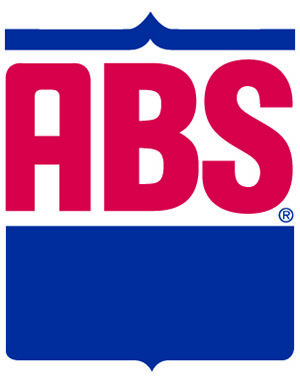As a graduate student in the late 1970s, I went to my first annual convention of the American Psychological Association. Rushing about with thousands of other young professionals, most wearing khakis or some other beige clothing, I remember walking past protestors outside the convention hall holding placards with pictures of dead animals.
That was my first encounter with the People for the Ethical Treatment of Animals (PETA) – a group that has had remarkable staying power in agitating against my profession.
Like many psychologists of my era, my schooling involved a semester or two of “rat lab” – setting up learning exercises for Norwegian rats running obstacle courses in a maze. Even as I gravitated toward field settings as a psychology professor, I remained a fervent defender of the use of animals in laboratory research.
But the PETA campaign raised unsettling questions many of us had never thought much about. What are the moral and ethical obligations humans carry in their relationships to non-human species?
Are there limits to the instrumental use of animals to meet human needs? Animal rights groups seemed prone to hysterical overreaction in response to such questions. But like many angry people who find common cause, PETA activists were voicing concerns that carried real legitimacy.
The protests of PETA entered my consciousness again in recent years through the concerns of my students, many voicing affinity with various animal rights groups. In my courses on the psychology of violence, students routinely referenced websites of these groups, citing them as authoritative sources on the horrors of factory farms.
While my initial tendency was to lecture them on standards of scholarship, I also recognized that their concern with where their food came from was a very positive moral impulse.
So I enlisted a group of my students to find out how dairy producers themselves think about their moral or ethical obligations to animals raised for food. This set us on a long path to making a feature-length documentary titled Milk Men: The Life and Times of Dairy Farmers.
When I spoke with farmers, the most common response to the question of whether economics trump animal welfare issues was to insist that the two are as interdependent as a devoted couple: “We take care of the cows and the cows take care of us” was a common refrain.
As one farmer put it, “There’s no way you can make money and not take care of something, even though the PETA people will act like you shouldn’t be thinking about making money.” While veterinarians I spoke with tended to agree with the claim that “Happy animals tend to be productive animals,” many also pointed out that cows are very stoic and can remain productive even when they are ill or lame.
Over the years I spent talking with producers, some held stronger passions than others for the species – the beauty and incredible productive capacities of the bovine. But all of the farmers I spoke with expended tremendous energy on what is now termed “cow comfort.”
Like good parenting, animal husbandry is labor-intensive. And like parenting, standards change over time. Good parents today know how to read signs of kids who are struggling and find gentler ways of guiding behavior than turning to the belt.
Dairy farming involves close contact with cows and careful observational skills. “When they grind their teeth, you know something’s not right,” one producer explained.
“Or you can see how they lay. A cow will tell you; you just need to know how to read her.” And there are similar frustrations with changing opinions issued by experts: “They used to tell you to move these cows from one group to another,” one farmer complained. “And now they finally decided that this moving them from one group to another is more stressful.”
But this same farmer added that some older practices are no longer acceptable. “If you look at what people have done in the past to get them up or make them move, we do it different now.
I don’t want to take a cattle prod to get these cows to go to the parlor; you shouldn’t do that sort of thing.” At the same time, the use of pain relief during dehorning tended to be more controversial, often depending on the recommendations of the veterinarian.
In carrying out background research for the film, I learned about the “five freedoms” enshrined in European and UK farm animal welfare laws: freedom from hunger or thirst; freedom from discomfort; freedom from pain, injury or disease; freedom to express their natural behaviors; and freedom from fear and distress. I sometimes quizzed farmers on these “freedoms,” asking if they could list them and which they felt were important.
The most controversial involved the question of whether animals needed to be able to express their natural behaviors as well as how the farmer decides whether an animal is in pain. The issue here may not be achieving a fixed and final answer to these questions but remaining curious and open to changing practices – as farmers have done throughout human history.
In visiting colleagues at the University of British Columbia Dairy Education and Research Centre, one of the leading programs in the world for the study of animal welfare on dairy farms, we spoke about attitudes toward animal welfare on farms.
While the Centre carries out studies that are often quite useful to farmers, and many producers draw on their findings, the focus on animal welfare can be met with resistance in the industry as well.
Dan Weary, a researcher at UBC, notes how the industry can fall prey to some of the same stereotyping as their opposition. “There’s a group of people in animal agriculture I call the pit bulls.
It’s the language of describing critics as a bunch of fang-toothed vegans. But if you say your critics are against your very way of life, then there’s no basis there for trying to understand their criticisms or trying to meet those individuals partway or finding some common goals.”
Weary also emphasized how animal welfare thinking in the dairy industry has advanced far beyond the problem of animal cruelty depicted so routinely in sensationalized online videos. And not unlike other businesses, problems in the dairy industry are often symptomatic of broader political and economic forces.
Farming ethics are the responsibility of farmers, but the ethical obligations and costs that accompany raising animals for food fall to the rest of us as well. In making Milk Men, our hope was to address some of the provocative questions posed by animal rights groups rather than simply shouting them down. PD
Haaken is the director of “Milk Men: The Life and Times of Dairy Farmers,” a documentary that follows changes in the dairy industry in the Pacific Northwest.

-
Jan Haaken
- Emeritus professor of psychology
- Portland State University
- Email Jan Haaken





